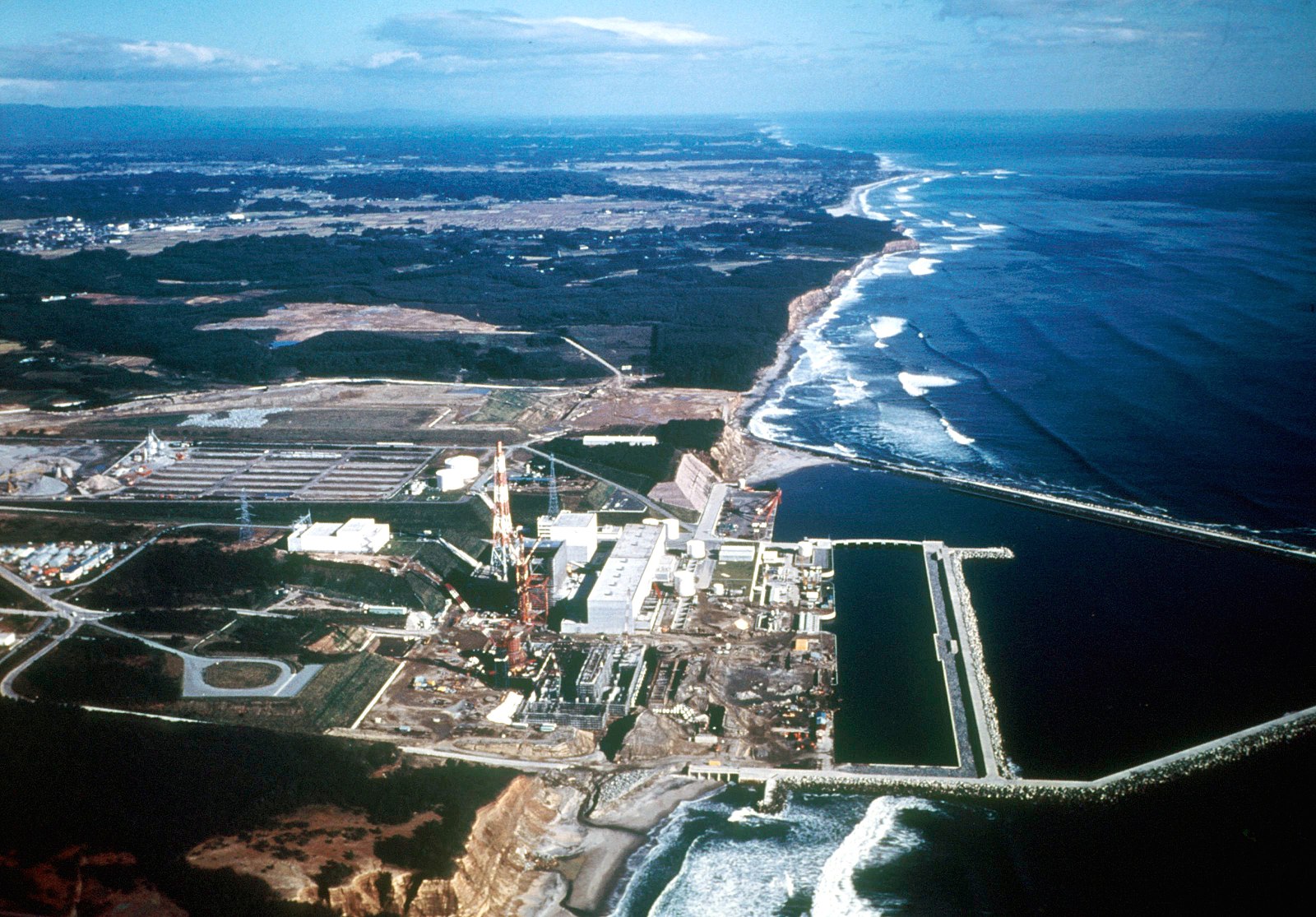Part 2 of 2 Parts (Please read Part 1 first)
In December of 2018, the WNA revealed plans for the “Harmony” program. This is a global initiative for the nuclear power industry. It “provides a framework for action, working with key stakeholders so that barriers to growth can be removed.” The plan calls for twenty-five percent of the electricity in the world to be generated by nuclear power by 2050. This will require that one thousand gigawatts of new nuclear capacity be added in the next thirty years. Acknowledging that they have set an ambitious goal, the WNA says, “This is an ambitious target, but the rate at which new reactors will have to be built is no higher than what has been historically achieved. To achieve this, new nuclear capacity added each year would need to accelerate from the current 10 gigawatts to around 35 gigawatts for the period 2030-2050. Those countries operating nuclear power plants should commit to continue to do so and those countries with recent experience of new nuclear build should commit to a rapid expansion of their construction programs to deliver significant new nuclear construction from 2025.” It will be interesting to see if the global nuclear power reactor fleet can grow at the rate envisioned by the WNA.
The need to find permanents solutions to the spent nuclear fuel storage problem still remains. If it is not solved in the next few years, some reactors may have to be shut down prematurely because their spent fuel cooling pools have filled.
There is also the challenge from renewable energy sources. The cost of wind and solar installation is dropping rapidly. In addition, the claim that only fossil fuels and nuclear power can provide the base-load power requirements of the world is being disproven by advances in battery technology. For example, in Australia, a major battery installation cost sixty six million and saved forty million dollars in the first year of operation.
Another challenge for the expansion of nuclear power is the fact that the water from lakes, rivers and seas that is being used to cool nuclear power plants is warming due to climate change. Already, some plants have had to be shut down because their cooling water was too warm to properly cool the reactor.
With a rapid increase in the number of nuclear reactors, the mean time between failures based on the current competence of nuclear reactor operators will drop. Considering the past rate of nuclear disasters, that means that it is probable that there will be a major nuclear accident before the 2050 deadline for the expansion of the global nuclear fleet.
As we have seen from the Fukushima nuclear disaster of 2011, such a disaster delivers a shock to the world-wide nuclear power industry. As a result of Fukushima, all of Japan’s power reactors were shut down for years. Germany decided to abandon nuclear power. Nuclear plants around the world were shut down while they were upgraded to take into account what was learned from Fukushima. If there is another major nuclear accident before 2050, you can bet that it will lead to widespread public skepticism about nuclear power and a reluctance on the part of politicians and investors to support nuclear power.
Blog
-

Nuclear Reactors 714 – Annual Report On The State Of The Global Nuclear Power Industry – Part 2 of 2 Parts
-
Nuclear News Roundup Sep 06, 2019
-

Geiger Readings for Sep 06, 2019
Ambient office = 108 nanosieverts per hour
Ambient outside = 103 nanosieverts per hour
Soil exposed to rain water = 105 nanosieverts per hour
Beefsteak tomato from Central Market = 104 nanosieverts per hour
Tap water = 112 nanosieverts per hour
Filtered water = 97 nanosieverts per hour
-

Nuclear Reactors 713 – Annual Report On The State Of The Global Nuclear Power Industry – Part 1 of 2 Parts
Part 1 of 2 Parts
The World Nuclear Association (WNA) is an international organization that represents the global nuclear industry. They just published their sixth World Nuclear Performance Report covering global nuclear activities in 2018. In 2018, there were four hundred and forty-nine commercial nuclear power reactors in operation. They produced a total of three hundred and ninety-seven gigawatts which represents more than ten percent of global electricity production. The global nuclear reactor fleet operated at an average capacity of eighty percent.
In 2018, nine new reactors were put into operation world-wide with a total capacity of ten and a half gigawatts. Seven of these new reactors were located in China. These included new reactors types such as AP1000s, EPRs and ACPR-1000.
Seven reactors were permanently closed with a combined capacity of five and a half gigawatts. Four of the reactors that were retired were in Japan and had not generated any power since the Fukushima nuclear disaster in 2011. Another in Taiwan had not been operational since 2015. Exelon shut down the oldest operating reactor in the U.S, their Oyster Creek nuclear power plant. In Russia, the Leningrad One reactor was shut down.
Construction on nine new reactors began in 2018. These new projects include the Akkuyu 1 in Turkey, Hinkley Point C-1 in the UK, Kursk II-1 in Russia, Rooppur 2 in Bangladesh, and Shin Kori 6 in South Korea.
In 2018, global average capacity declined a little. From eighty-one and one tenths in 2017 to seventy-nine and eight tenths in 2018. There is an increasing trend for some reactors to load-follow demand. This accounts for some of the reduction.
The WNA reported that there was not “significant age-related trend” in 2018, despite the fact that the world fleet is getting older. The average age of the reactors in the commercial power fleet about thirty years. As mentioned above, five reactors have been operating for fifty years. These include Beznau 1 in Switzerland, Nine Mile Point 1 and R.E. Ginna in the U.S, and Tarapur 1 and 2 in India.
The average construction time for reactors increased in 2018. The WNA attributed this to the fact that four of nine new reactors put into service were new types of reactors. IN 2017, the average construction time for a new reactor was between five and six years. In 2018, that grew to eight and a half years.
The WNA report pointed out that current circumstances “are creating profound challenges for nuclear power in some of its most mature markets.” More than half of the world’s four hundred and forty-nine power reactors are in the U.S. and Europe. The report said that, “despite the vital importance of nuclear to achieving sustainable energy goals, reactor retirements continue to outpace capacity additions.” The WNA report lists some developments that suggest a long-term slowdown for the nuclear sector in developing countries. Between 1970 and 1990, the majority of new reactors were built in West and Central Europe and in North America. After that, the majority of new reactor projects have been in Asia, Eastern Europe and Russia.
Please read Part 2 -

Geiger Readings for Sep 05, 2019
Ambient office = 92 nanosieverts per hour
Ambient outside = 89 nanosieverts per hour
Soil exposed to rain water = 91 nanosieverts per hour
Crimini mushroom from Central Market = 90 nanosieverts per hour
Tap water = 102 nanosieverts per hour
Filtered water = 93 nanosieverts per hour
-

Nuclear Reactors 712 – New SLIMM Small Modular Reactor Design – Part 2 of 2 Parts
Part 2 of 2 Parts (Please read Part 1 first)
The SLIMM reactor is compatible with different energy conversion technologies for converting the heat of the nuclear reaction to electricity. These technologies include supercritical water and CO2 Brayton cycles, super-heated steam Rankine cycles, and open and closed air Brayton cycles. It could be used in almost any electricity-generation configuration.
The VSLIMM version can use open air-turbo-Brayton energy conversion. This removes the need for active cooling which will make this reactor idea for use in arid regions.
The SLIMM reactors can also produce what is called process heat which can be used for many industrial purposes such as desalination, fracking for fissile fuel, hydrogen fuel production, aluminum smelting, etc. It is compatible with renewable energy sources attached to a common grid and it has the ability to load follow or increase or decrease its output based on moment to moment demand changes.
The SLIMM reactors have a very small physical footprint. They can be installed on portable platforms such as trucks, trains, barges or ships. They can also be installed at a permanent site. This capability is ideal for remote and isolated communities and installations that are in great need of a cheap source of steady energy. They can be used to reduce global poverty, on island nations, advanced military bases or even on moons and other planets. It could be used on floating platforms to assist in recovery from natural disasters such as earthquakes, tsunamis or hurricanes.
It is estimated that it will only require a year or two to construct and install a SLIMM reactor. When a module is no longer needed or no longer operational, it can be sent back to the factory. There will be no need to store new or spent fuel at the operational site for any significant length of time. The major factor that will expand the time necessary for these reactors to be implemented will be the Nuclear Regulatory Licensing process which can take a decade or more. This is especially true for new and different designs. It would improve the deployment of the SLIMM reactors if Congress would pass laws that speed up the NRC licensing process for SMRs.
In July, Senate Bill 903, the Nuclear Energy Leadership Act, was passed out of the U.S. Senate Energy and Natural Resources Committee. This bill is intended to restore U.S. leadership for the civil nuclear industry. In order to accomplish this, the bill will work to create a variety of advanced nuclear reactor technologies that are clean, safe and reliable.
The Nuclear Energy Renewal Act, was developed by senators from both parties in order to extend the life of reactors in the U.S. existing commercial power reactor fleet. Senate Bill 512, the Nuclear Energy Innovation and Modernization Act, was signed into law in January of this year.
In September of 2018, the Nuclear Energy Innovation Capabilities Act was passed. Its purpose is to remove some of the barriers confronted by advanced nuclear reactor designs. It will also establish some of the infrastructure that will be needed to get this done.
If the SLIMM reactors and other SMRs can be designed and built cheaply to operate safely, there could be a new age of nuclear energy just around the corner. -

Nuclear Reactors 711 – New SLIMM Small Modular Reactor Design – Part 1 of 2 Parts
Part 1 of 2 Parts
Small modular reactors are a being developed by a number of different companies. They are defined as producing three hundred megawatts or less. They will be built in factories in order to improve quality control and moved in modules to the site where they will be operated. Multiple SMRs can be connected together to generate more than three hundred megawatts. There are a lot of design innovations being explored which may prevent melt downs. Some of the designs will not need to be refueled for decades.
One of the more recent designs being worked on is named the Scalable Liquid Metal-cooled small Modular Reactor or (SLIMM). This is what called a fast reactor that uses liquid sodium as a coolant and a heat exchange medium. It will generate from ten million to a hundred million watts of electricity for decades without the need to be refueled depending on how much power it will be generating. It has a small version that is called the Very Scalable Liquid Metal-cooled small Modular Reactor (VSLIMM).
This new design was created at the University of New Mexico’s Institute for Space and Nuclear Power Studies in Albuquerque. Mohamed S. El-Genk, Luis Palomino and Timothy Schriener are the scientists who produced the new design. They said, “Fully passive operation with no single point failure, cooled by natural circulation of sodium during operation and after shutdown, high negative temperature reactivity feedback and redundant control and safety shutdown, walk-away safe, long life without refueling, factory fabricated, assembled and sealed, shipped to the construction site by rail, truck, or barge, installed below ground to avoid direct impact by missiles or aircraft, and mounted on seismic oscillation bearings to resist earthquakes.”
The SLIMM incorporates redundant and passive decay heat removal accomplished by heat pipes and ambient air. It cannot melt down; it is inexpensive to build and it only needs ordinary outside air to cool it if it shuts down quickly for any reason. The sodium coolant has very low vapor pressure. This means that the reactor can operate below atmospheric pressure so there is no need to surround it with a high-pressure vessel necessary for common power reactors.
The SLIMM reactor is about six feet high. It also has a chimney that can be between six feet and twenty-four feet depending of what level of power is being generated. The reactor has a primary vessel surrounded by a guard vessel. Each has two sections. The lower sections contain the reactor core and the control drivers. The upper section contains the chimney and the helically coiled tubes heat exchanger (HEX). The primary and the guard vessels are separated by a small gap that contain argon gas, in-vessel control drives and support structure for the core.
The height of the upper sections of the primary and guard vessels and the height of the chimney increase as the reactor thermal power increases but the same core and control drives are used regardless of the power level.
Please read Part 2

